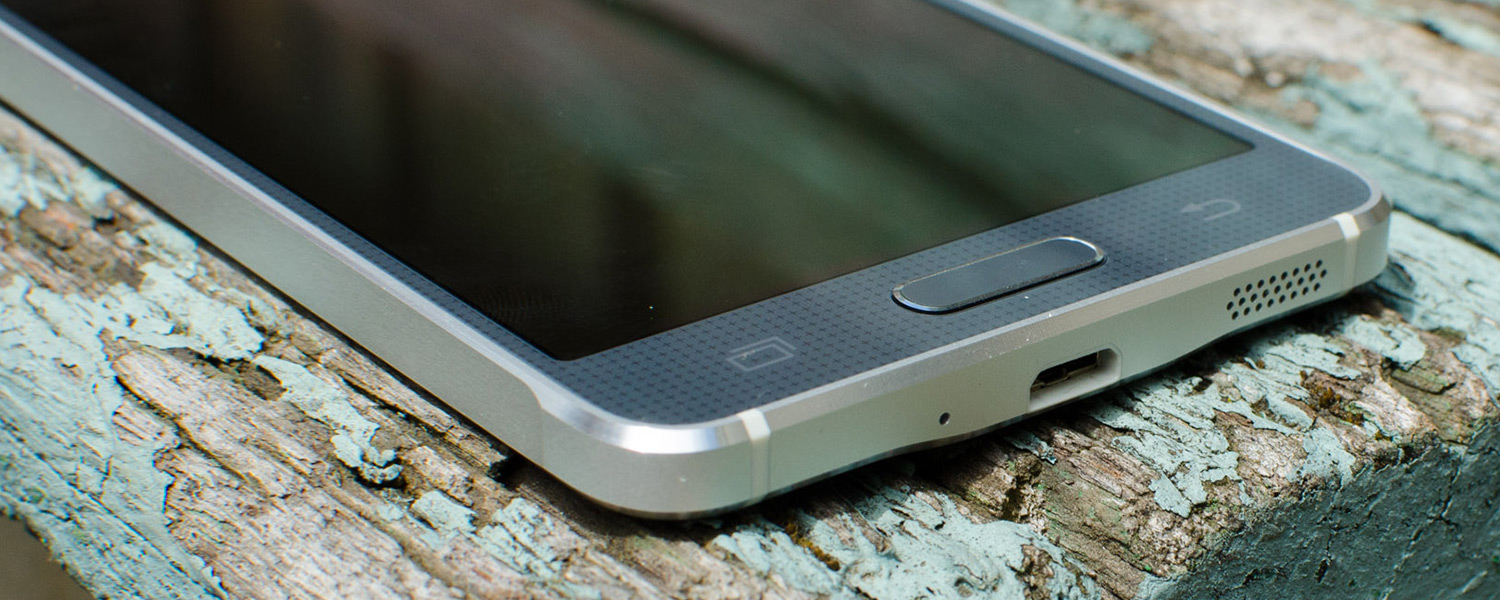Performance: Exynos 5 Octa 5430
The internal hardware of the Galaxy Alpha is a familiar story: Samsung has produced two models, one with a Qualcomm Snapdragon 801 SoC, and one with a Samsung Exynos 5 Octa 5430 SoC. Both models come with 2 GB of RAM and 32 GB of internal storage, plus the usual connectivity features including Wi-Fi 802.11a/b/g/n/ac, GPS+GLONASS, Bluetooth 4.0 and NFC.
The Snapdragon 801 model uses an MSM8974AC SoC, which packs a 2.45 GHz quad-core Krait 400 CPU, Adreno 330 GPU clocked at 578 MHz, a dual-channel LPDDR3 controller providing 14.9 GB/s of bandwidth, and Category 4 LTE. I've spoken in length about the Snapdragon 801 in previous smartphone reviews, so it's no longer an exciting new SoC.
The more exciting version of the Galaxy Alpha packs the Exynos 5 Octa 5430, a new chip from Samsung that (so far) has only been used in this device. It's an upgrade on the Exynos 5422 used in the Galaxy S5, but doesn't use the new 64-bit ARMv8 architecture of the Exynos 7 Octa 5433 found in the Galaxy Note 4. In other words, this is still a 32-bit only chip.
The Exynos 5430 is the first chip from Samsung to be built using a 20nm HKMG manufacturing process, the very same process used for the Note 4's Exynos 5433. This means we can expect better energy efficiency compared to previous Exynos processors, which is important for the Alpha with its small battery. It's also a step ahead of Qualcomm, whose latest SoCs (the Snapdragon 805 and 801) are still 28nm.
The 5430 comes with four ARM Cortex-A15 CPU cores at 1.8 GHz paired with four Cortex-A7 CPU cores clocked at 1.3 GHz in a big.LITTLE configuration with global task scheduling. The A15's clock speed has been reduced by 100 MHz compared to the Galaxy S5's Exynos 5422, though the GPU is more powerful: it's a Mali-T628MP6 clocked slightly higher at 600 MHz.
Also included with the Exynos 5430 is a dual-channel LPDDR3 controller clocked at 1066 MHz, delivering 17.0 GB/s of bandwidth. As there is no built-in cellular connectivity with any of Samsung's current Exynos SoCs, the 5430 is paired with Intel's XMM7260 modem that provides Category 6 LTE. At this point in time you won't benefit from the faster LTE standard as most countries haven't deployed the relevant technology just yet, but it's good future proofing.
For this review I received the Exynos 5430 model, which is excellent as I have already performed many benchmarks on Snapdragon 801 devices. If you want to determine how the Snapdragon model performs, check the benchmarks below for the Galaxy S5 (Snapdragon) which packs an identically-clocked Snapdragon 801. If you're more curious about the Exynos model, the benchmarks for the Alpha will be more relevant to you.
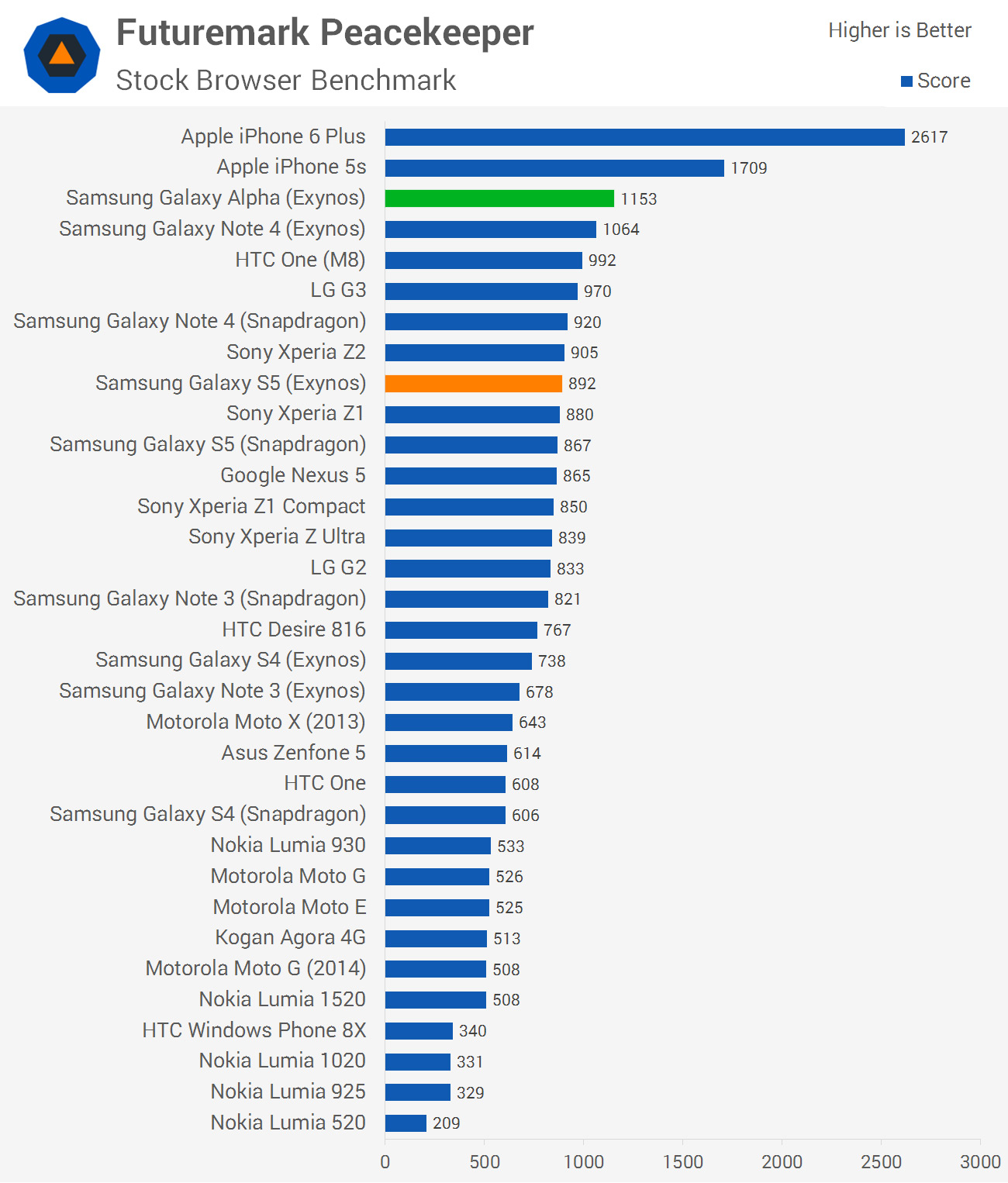
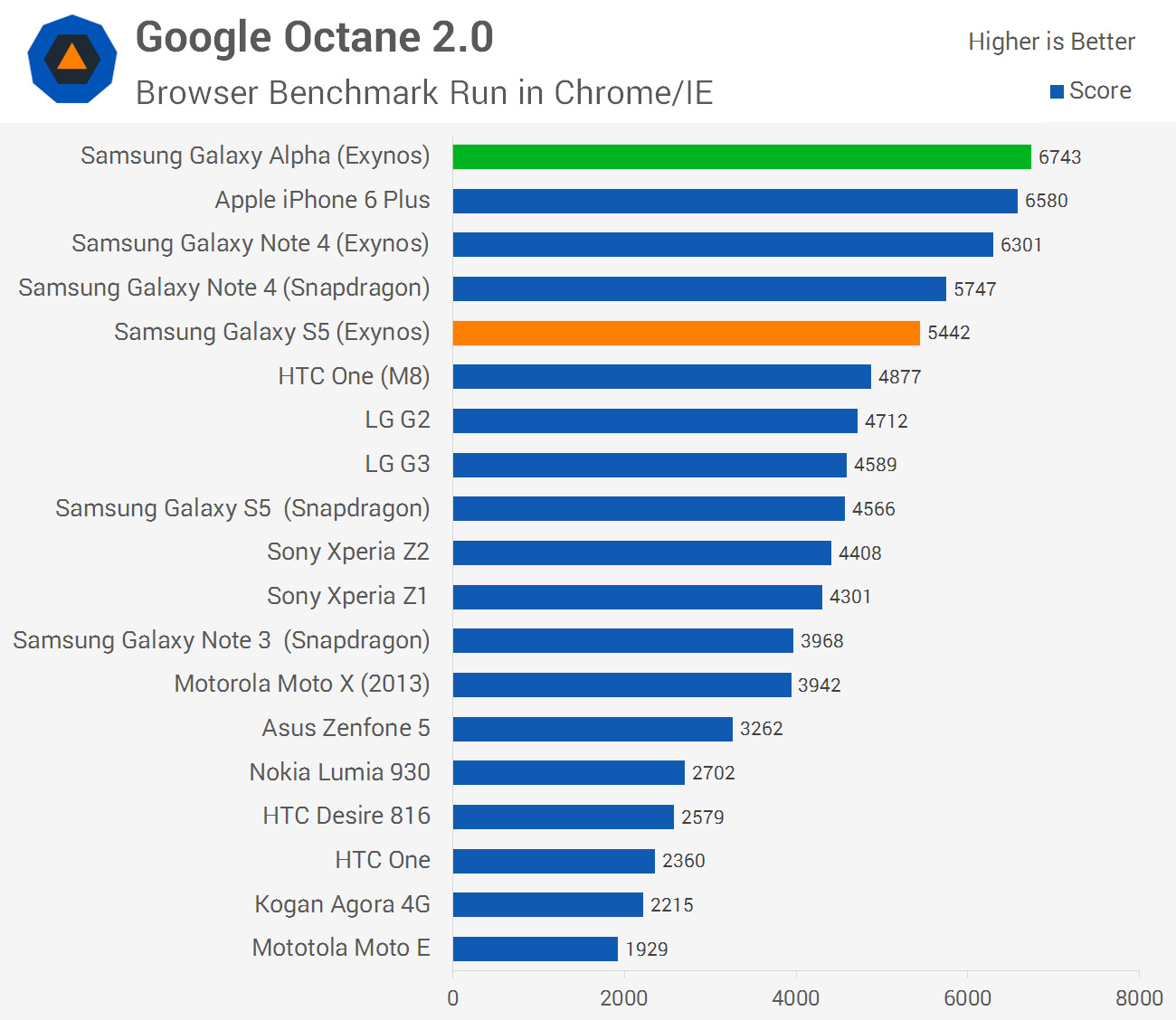
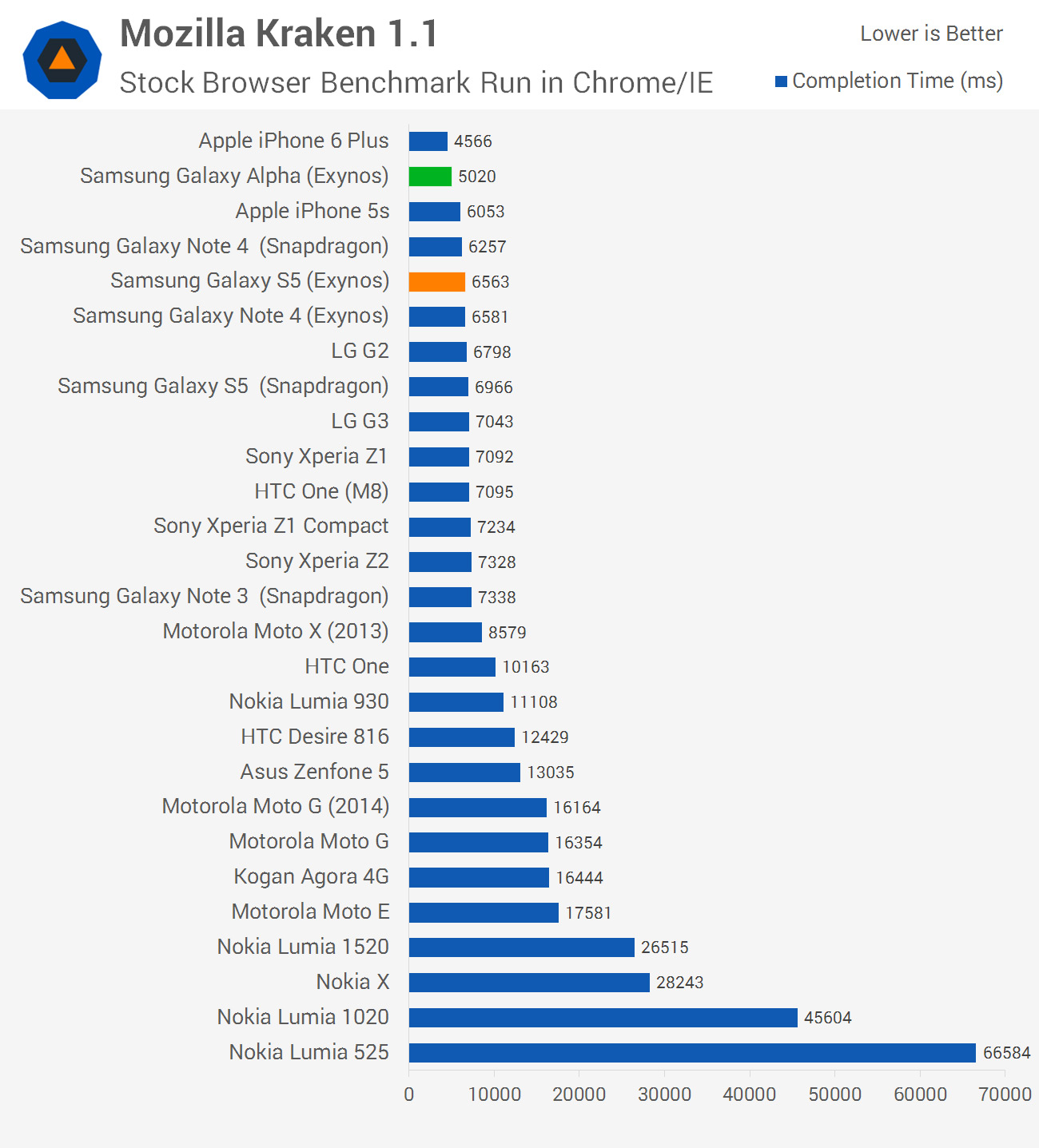
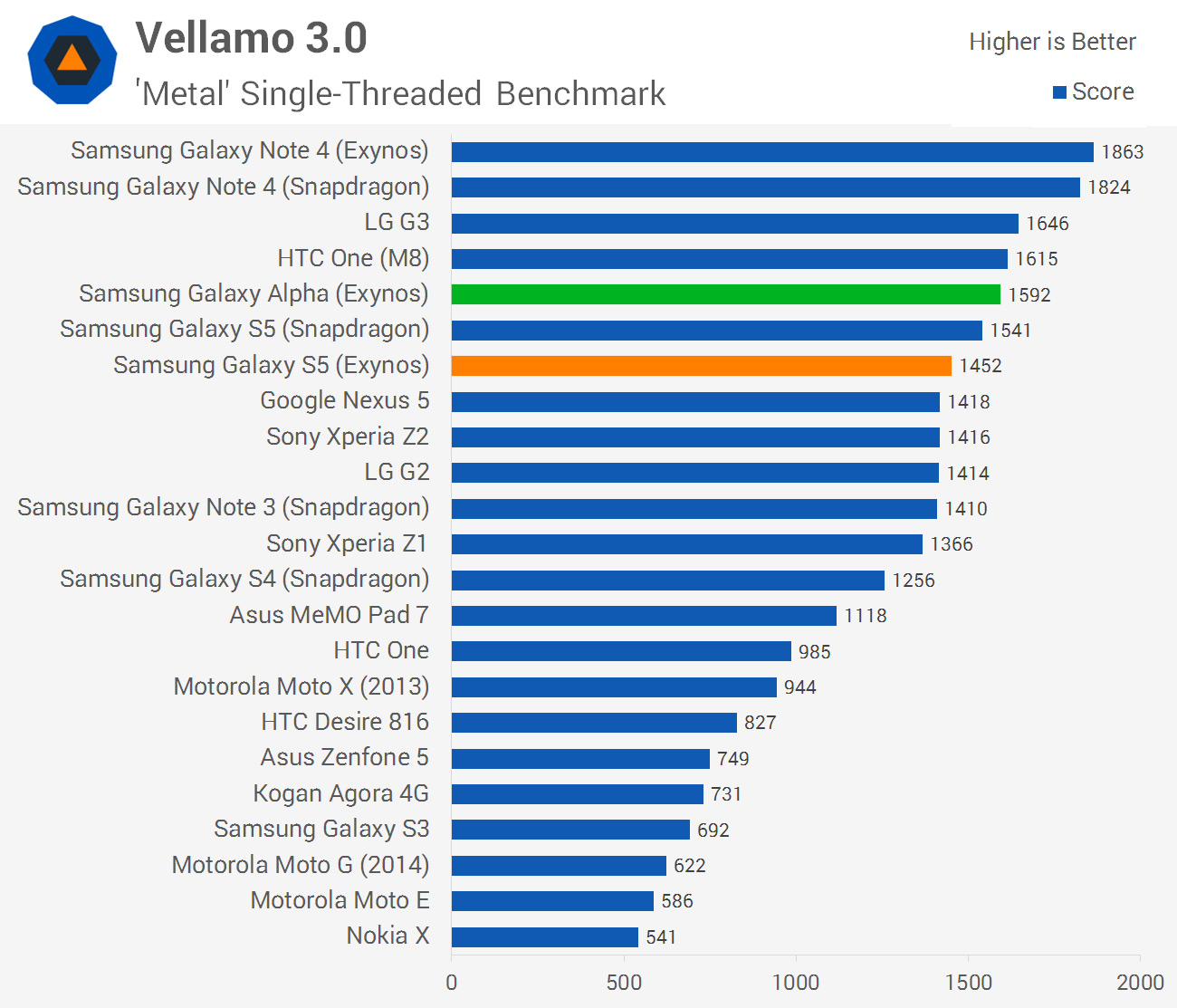
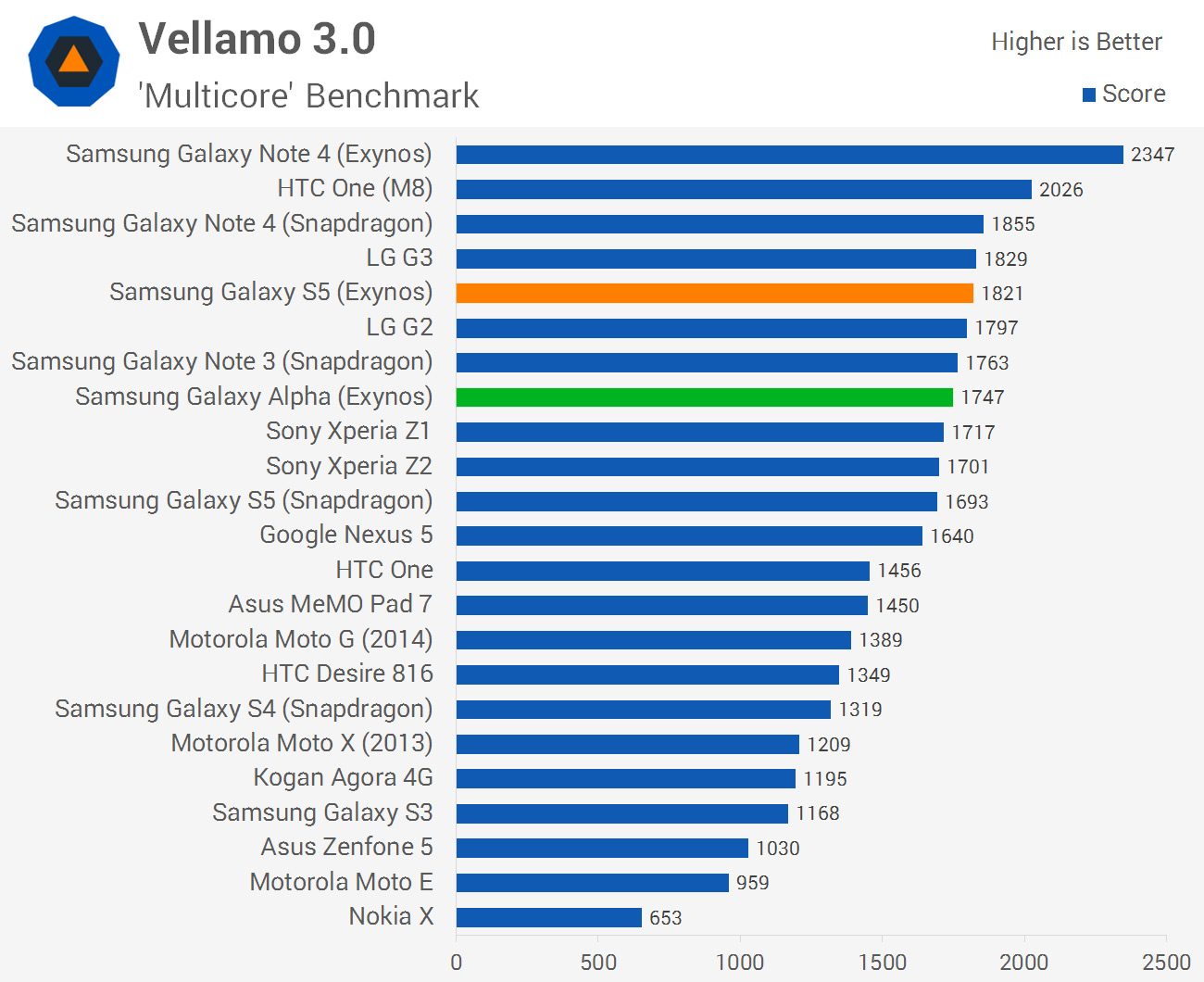
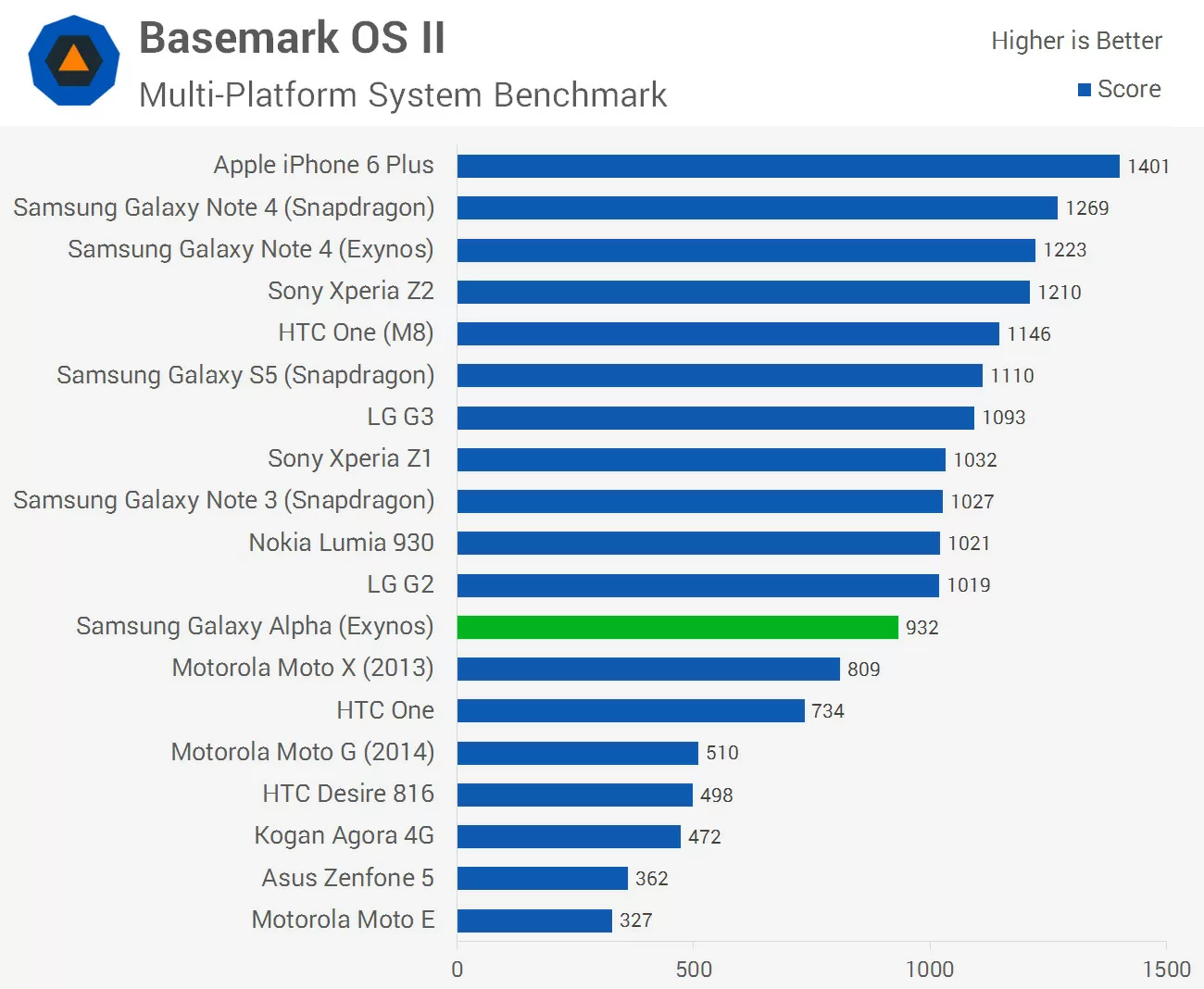
In our CPU-bound benchmarks, specifically those which are run in the browser, the Alpha performs exceptionally well, beating out both variants of the Note 4. These results are surprising, considering the CPU cores are supposedly more powerful in the Note 4, but were consistent and repeatable. It's not a browser version difference either, which left me puzzled.
In the CPU benchmarks not run in the browser, the Exynos 5430 performed around same level as Qualcomm's Snapdragon 801. This is good news for buyers of the Alpha: there is no significant advantage to getting the Exynos model over the Snapdragon when it comes to CPU-bound performance. As expected, the device is smooth and snappy to use in basically all situations.
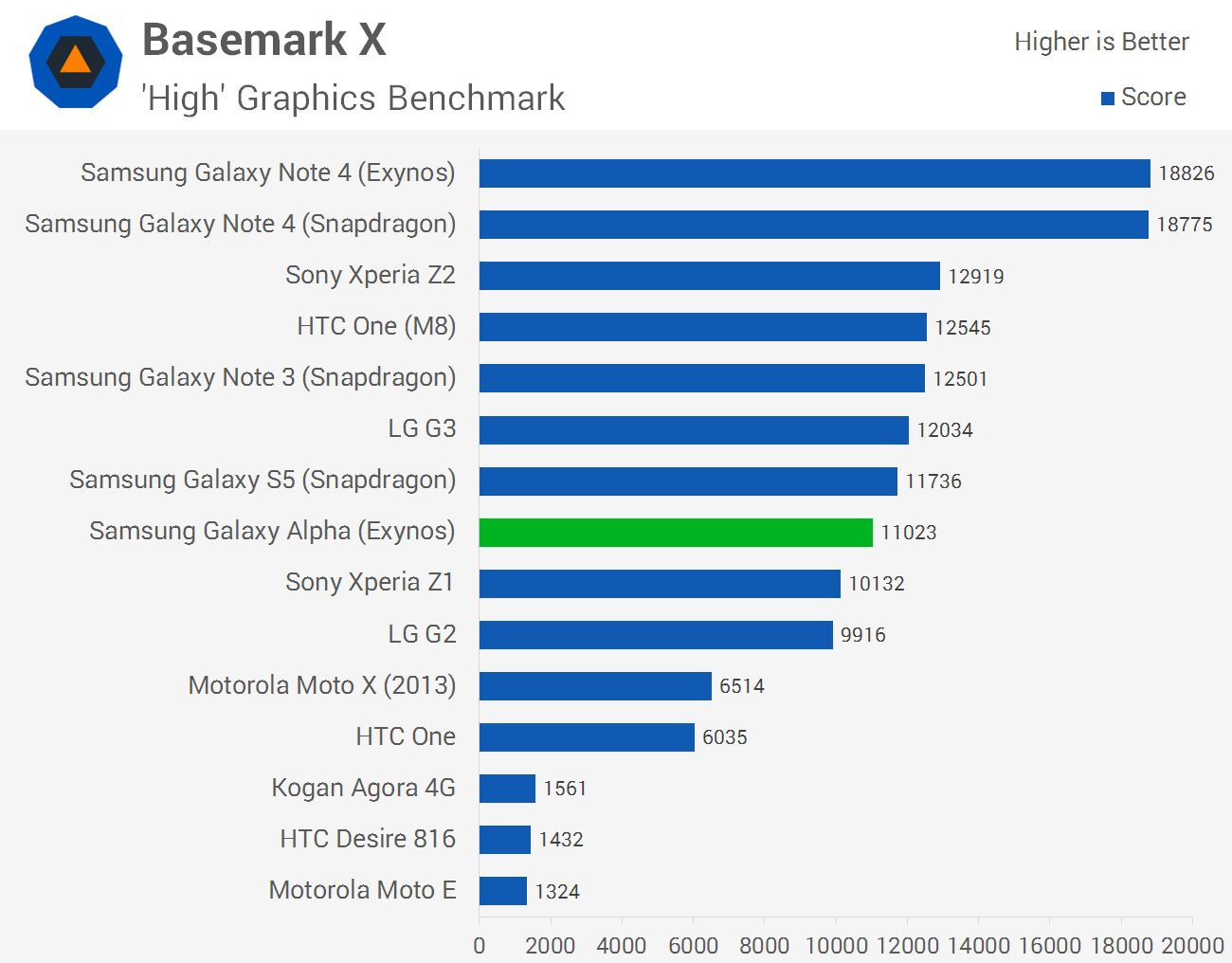
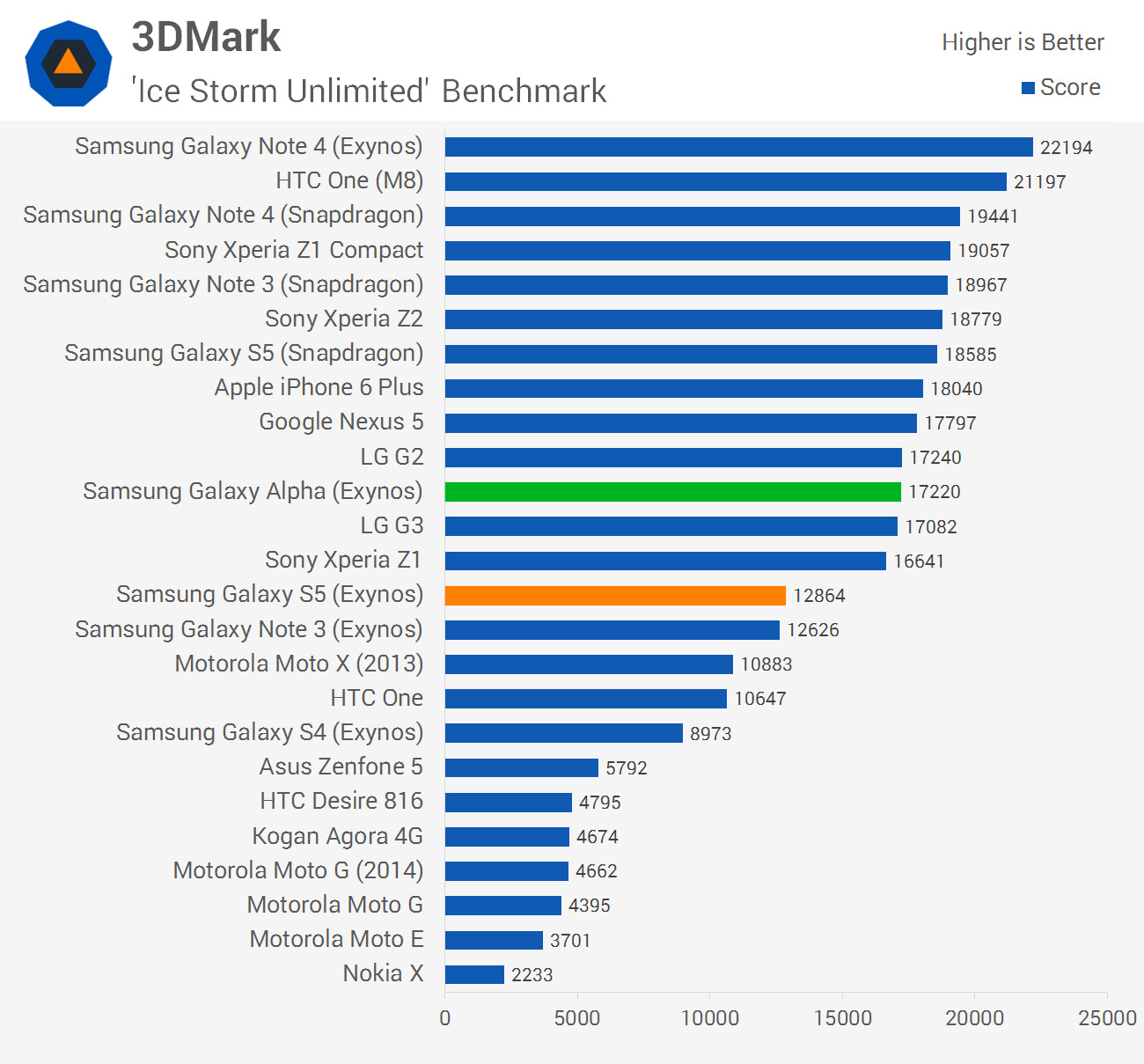
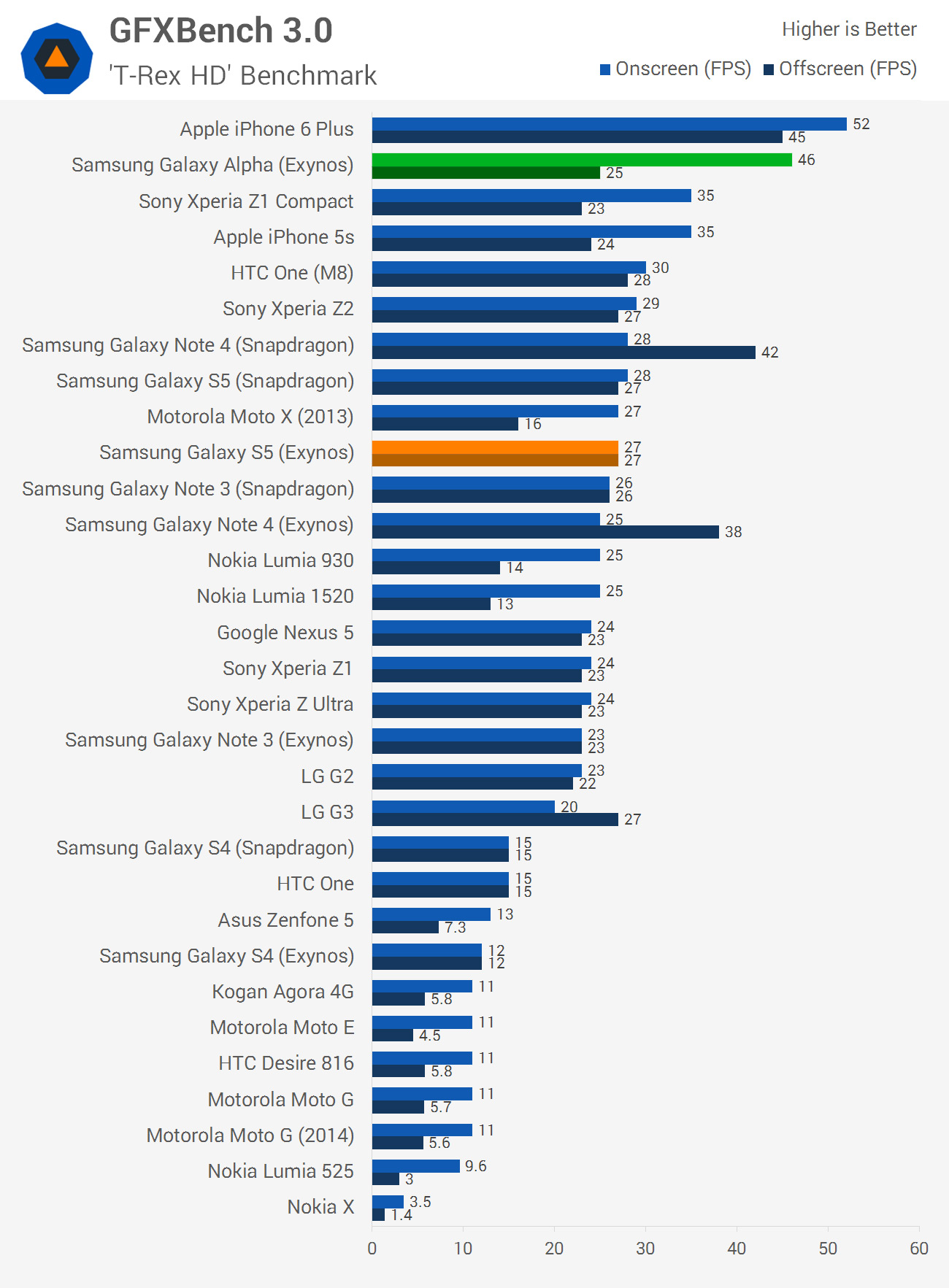
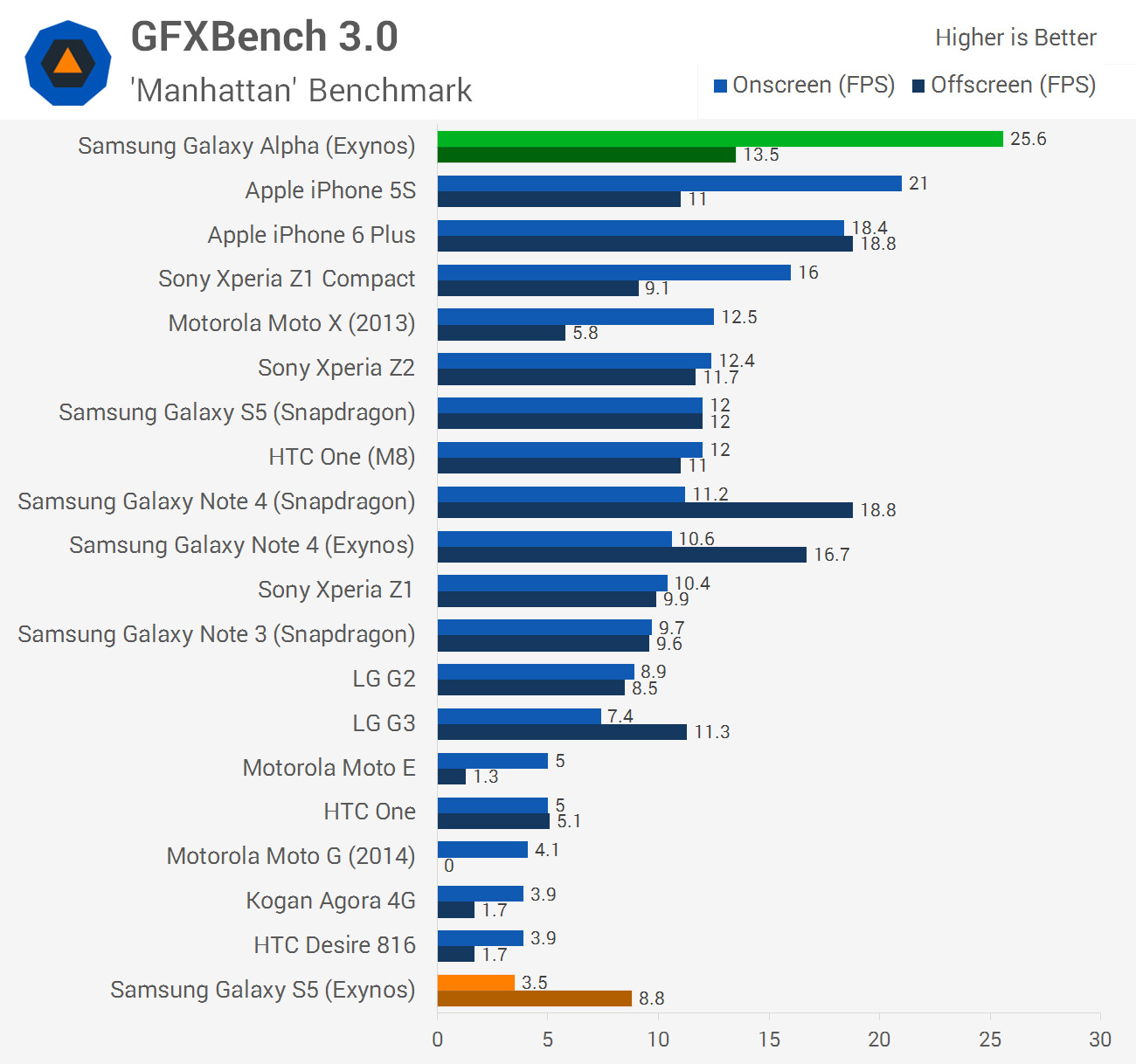
The Alpha is an interesting handset because it has a monstrously powerful GPU paired with a lower-than-usual 720p display resolution. This leads to the SoC recording impressive onscreen performance results, which translate into solid frame rates in games, higher than what you'd get if the same SoC was paired to a 1080p display.
The strong onscreen performance is noticeable in some intense games: in Grand Theft Auto: San Andreas, for example, the game is easily playable on near-maximum settings; something which is not possible on handsets with higher display resolutions.
The raw performance of the GPU in the Exynos 5430 is higher than GPU in the Exynos 5422, which corresponds with how the Mali-T628MP6 is clocked higher in the 5430. It falls below the Snapdragon 801's Adreno 330, though the gap has closed between the two SoCs since the launch of the Galaxy S5. Based on these performance numbers the Exynos 5430 is capable of gaming at 1080p, and certainly so for 720p gaming.
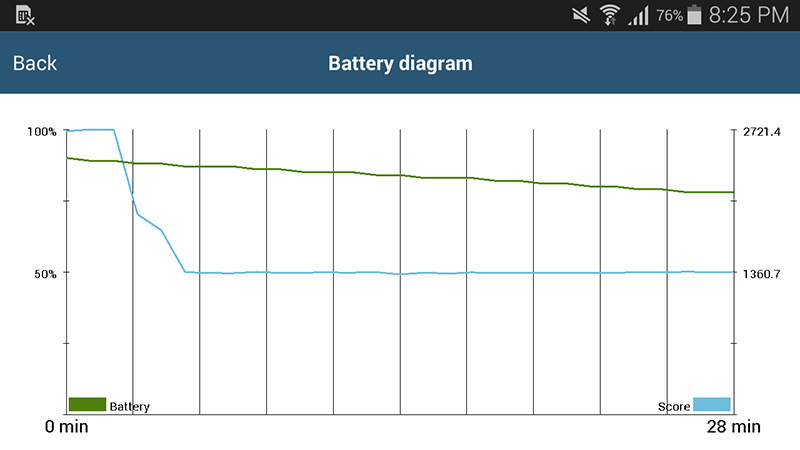
One thing to note about our benchmarks that I performed above is that they correspond to the peak performance that the SoC can give. In real-world situations it's unlikely that you will consistently see peak performance, and that's because the Galaxy Alpha aggressively throttles the SoC after about two minutes of use. The Alpha throttles back so much that after five minutes of intense 3D gaming the SoC will be delivering around half the performance that it was at the start; hardly an ideal situation.
I suspect that this is due to both thermal constraints (the Alpha can get quite hot during use), and battery concerns. Once again, the Alpha has a small battery and throttling the SoC can help prolong its life.
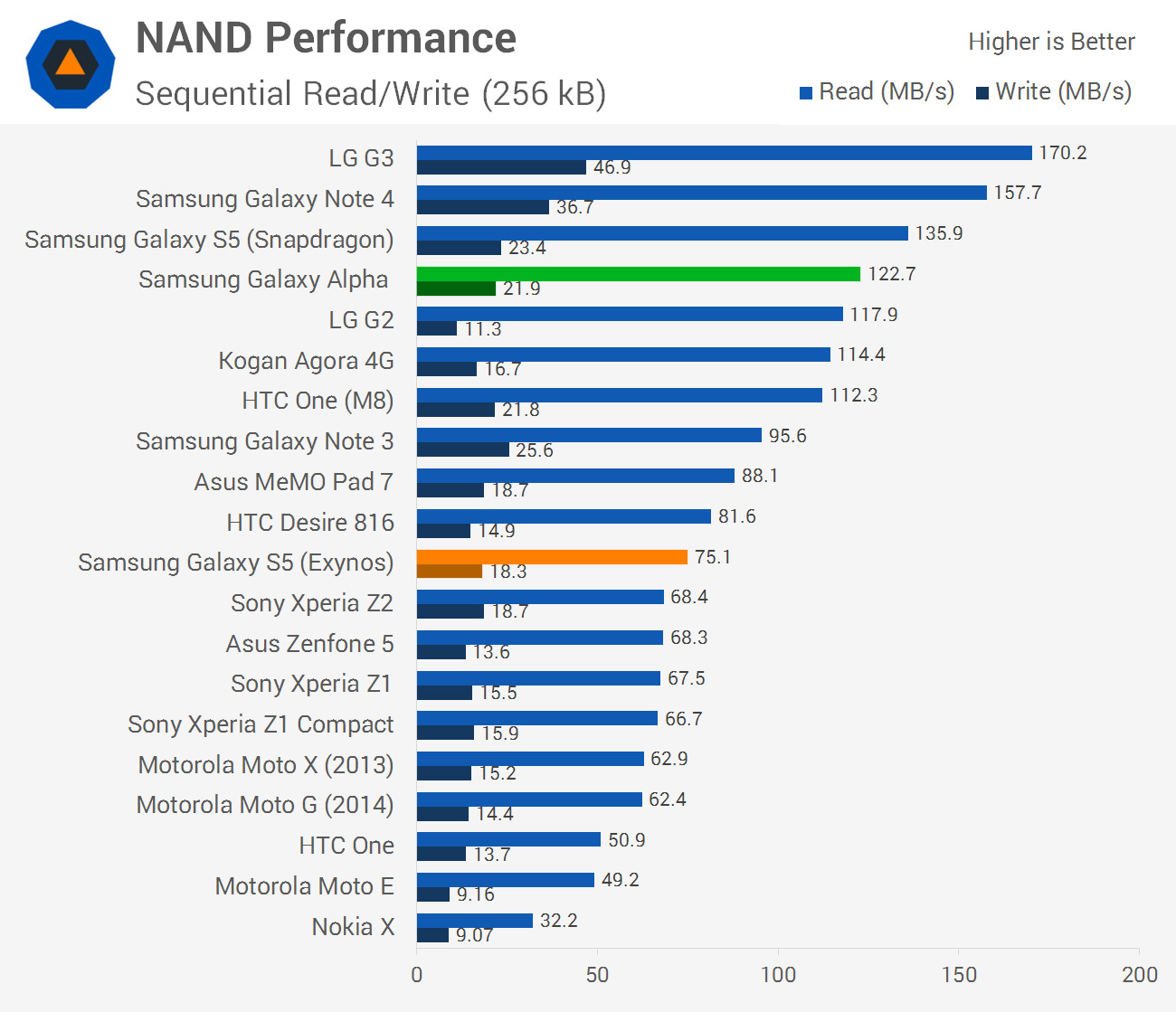

The Galaxy Alpha has high quality NAND soldered to the mainboard, delivering speeds slightly below the Snapdragon Galaxy S5. 32 GB of storage can be a bit limiting - especially if you want to copy across a large media library - considering there's no microSD card slot, but at least you're not stuck with a paltry 16 GB.
I had a few issues with establishing reliable LTE connections, especially after moving away from a Wi-Fi signal. Occasionally it would take a very long time to regain a 4G data connection, sometimes requiring a device restart to work properly. I also wasn't overly impressed with signal strength, which was often lower than other devices I've used in the same areas. This is more likely due to the handset's design, rather than the Intel XMM7260 modem.
Other aspects of the Alpha's connectivity performed as expected, and when LTE was working reliably, I managed to get decent download speeds on Australia's fast 4G networks.
